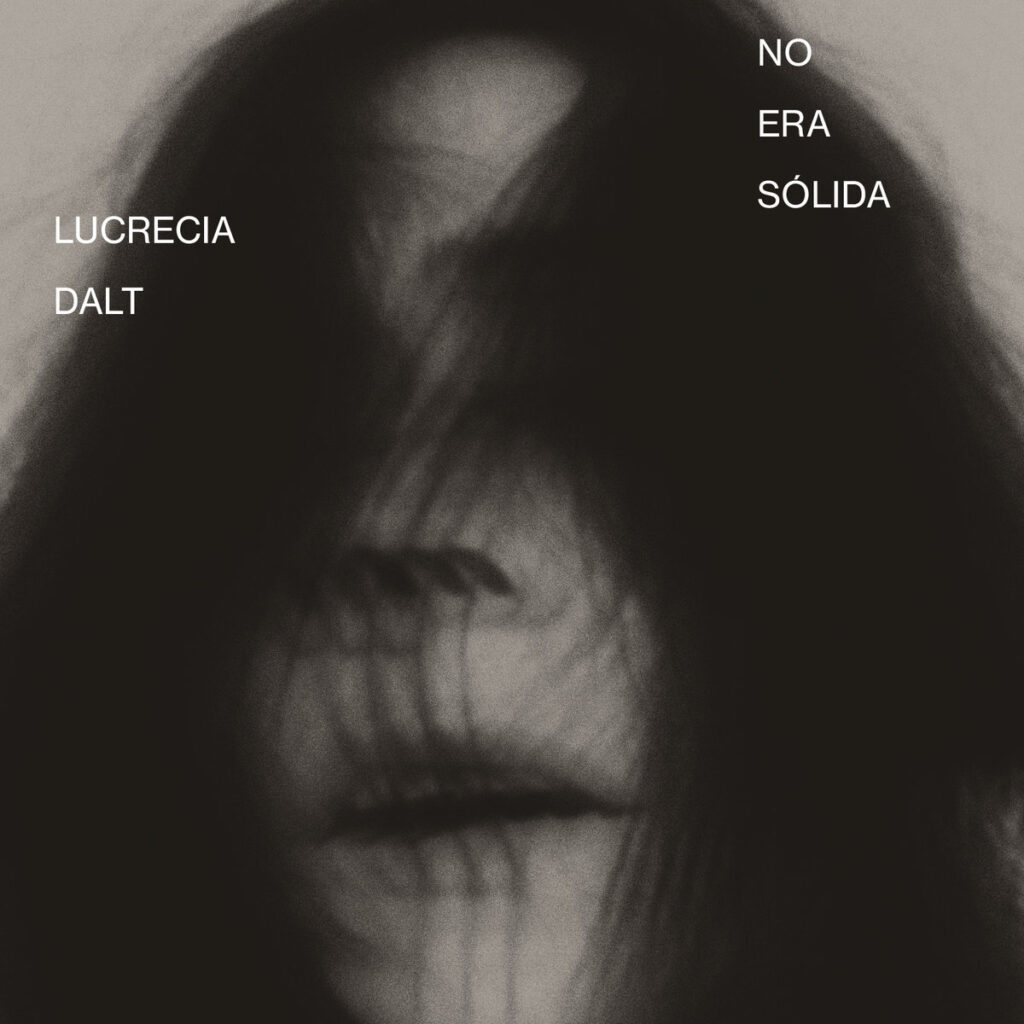"I build a lot of conceptual background for my music… I’m reading, I’m studying, I’m thinking about all these things and all this information makes me have a certain attitude towards life, an ethical approach…" – Lucrecia Dalt in an interview with Resident Advisor, 2018.
The music of Lucrecia Dalt carries an intensely research-driven framework. Similar in breadth and content to the likes of Laurie Anderson, Cosey Fanni Tutti or Björk, each release is composed of intricately woven electronics, often incorporating elements of spoken word and alt-pop. Dalt dives into an exhaustive series of themes including climate change, German new wave cinema and Lacanian notions of the self.
Translating to "she wasn’t solid," her album No era sólida explores the idea of dissolving; melting boundaries and becoming another person. A fictionalised character called ‘Lia’ half-narrates the record. She sings in a made-up language, a glossolalia somewhere between English and Spanish. Her double-tracked, lo-fi voice breaks into fragments of breath and meaningless words.
As with experimental vocalists such as Lyra Pramuk and Eartheater, Dalt’s musical identity is rooted in electronic dance music. The weighty sound of Medellín’s underground techno scene, where she emerged as a producer, is present in lead single ‘Disuelta’, in which synths mechanically whirl. But among the heavy rhythmic inflexions, there are unnerving shrieks and inhuman noises. At times the record feels half-formed and fragile. On ‘Espera’, the melody lumpers, its tempo pitching mechanically back and forth. It is in this gestating space of "becoming" – neither one nor the other, but both simultaneously – that No era sólida unfolds.
Feminist futurist and eco-philosopher Donna Haraway uses the concept of "becoming" to describe how human life, rather than being hierarchically separate, is intrinsically relational and interwoven. She describes the world as a knot in motion. Humans are dependent on and connected to other species and non-human environments such as air, water and electricity.
Transcending binaries of ‘self’ and ‘other’, ‘artificial’ and ‘natural’, Dalt slips in-and-out of character as ‘Lia’.
She channels mountains and machines, lava and smoke in the music video for ‘Disuelta’ (directed by Pedro Maia). Dancing through a cave to the track’s transmorphic beat, her skin tears into craggy rock formations, her gesticulating hands becoming eruptions of light or falling leaves. Through this metamorphosis from human into landscape, Dalt captures a politics of openness, considering the vulnerability of permeable, fluctuating life. This is also reflected in her decision to donate part of the proceeds of the release to Tierra Digna, a Colombian organisation dedicated to the defence of communities affected by economic policies devastate the environment.
Dalt’s background as a geotechnical engineer has greatly influenced her musical identity. Her 2018 album Anticlines, referring to a kind of geological formation, delved into properties of matter: glaciers moving and the alchemy of evaporating water. With No era sólida, she similarly brings together the sound of the earth with mechanised human interventions. ‘Coatlicue S.’ is a bleeping sonar, intermeshed with stones falling into an endless well. ‘Suprema’ also plays with an echo-effect, voices reverberating through the static of an excavation drill penetrating the strata.
No era sólida travels to cavernous spaces, occupying an ethereal landscape that is deep inside an unknowable earth. Its final title track crystallises with Dalt singing in Spanish, moving out of her made-up language, the dissolution finally coming into sharp focus.


